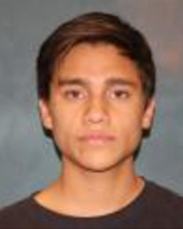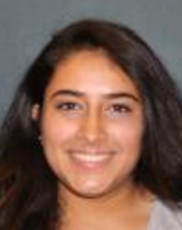Below is a summary of the abstract you submitted. Presenting author(s) is shown in bold.
If any changes need to be made, you can modify the abstract or change the authors.
You can also download a .docx version of this abstract.
If there are any problems, please email Dan at dar78@pitt.edu and he'll take care of them!
This abstract was last modified on May 12, 2017 at 3:02 p.m..

In our previous academic year, our Phage Hunters group at UTEP attempted for the first time to isolate novel Arthrobacter phages from soil samples collected around the Chihuahuan desert, near the international border with Mexico, in West Texas and Southern New Mexico. In sharp contrast with our previous success at searching for Mycobacteriophages, for which almost every soil sample collected turned out a Mycobacteriophage, our search for Arthrobacter phages was unsuccessful and we had to expand our sampling area to the Lincoln National Forest, in Cloudcroft, New Mexico, to finally find any Arthrobacter phage. This year, the use of improved protocols for the enrichment step allowed us to successfully isolate four different new Arthrobacter phages from samples collected in our local Paso del Norte area. All newly isolated phages formed clear plaques that were easily visible after overnight incubation at 28oC. However, issues faced during the amplification of the phages, as well as during DNA purification, prevented us from being able to submit these phages for sequencing. In view of those issues, our group annotated two Arthrobacter phages previously isolated by students at the University of Pittsburgh: Edmundo, isolated from soil collected near a small stream in Pushmataha County, OK., and Fluke, isolated from soil collected next to a Baptist church in Pittsburgh, PA. Edmundo and Fluke exhibited substantial differences in their genomic organization and content, which exemplify and reflect the apparent diversity of the Arthrobacter phages. Edmundo, a member of the AL cluster, has a 60,191 bp long genome coding for 98 different protein products, 91 of which are encoded in the forward direction, and exhibits close genomic similarity with Arthrobacter phages Laroye and Salgado (two previously characterized AL Arthrobacter phages). Fluke, a member of the AK cluster, has a 43,812 bp long genome coding for 62 different protein products, 57 of which are encoded in the forward direction, and displays substantial genomic similarity with Arthrobacter phages Immaculata, Lucy, and Preamble, all members of the AK cluster. Remarkably, in spite of exhibiting substantial differences with each other, both Edmundo and Fluke lack tRNA coding genes and exhibit high GC content (60.9% for Fluke, 64.6% for Edmundo). Further characterization of the Arthrobacter phages isolated from our local environment, currently underway, will likely allow us to gain further insights into how these phages relate to those found in areas with sharp environmental differences such as the ones annotated by our group during this academic year.


